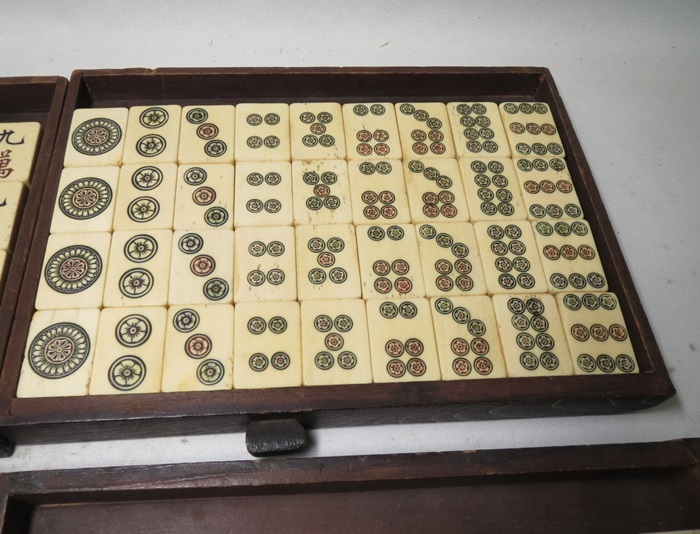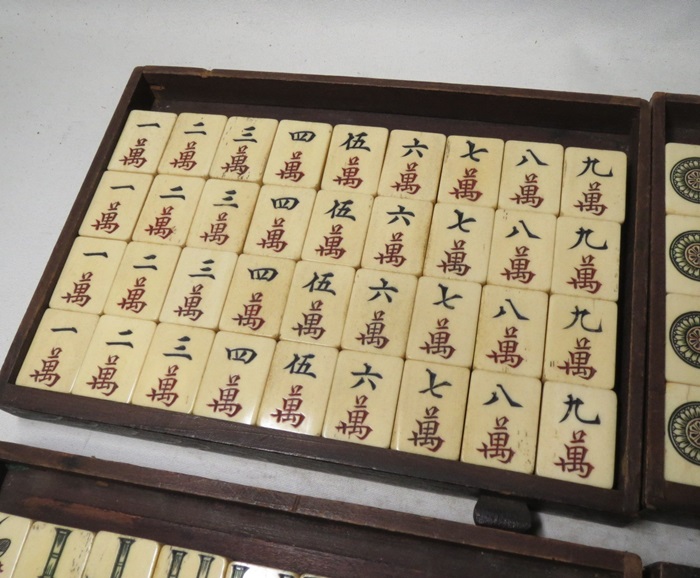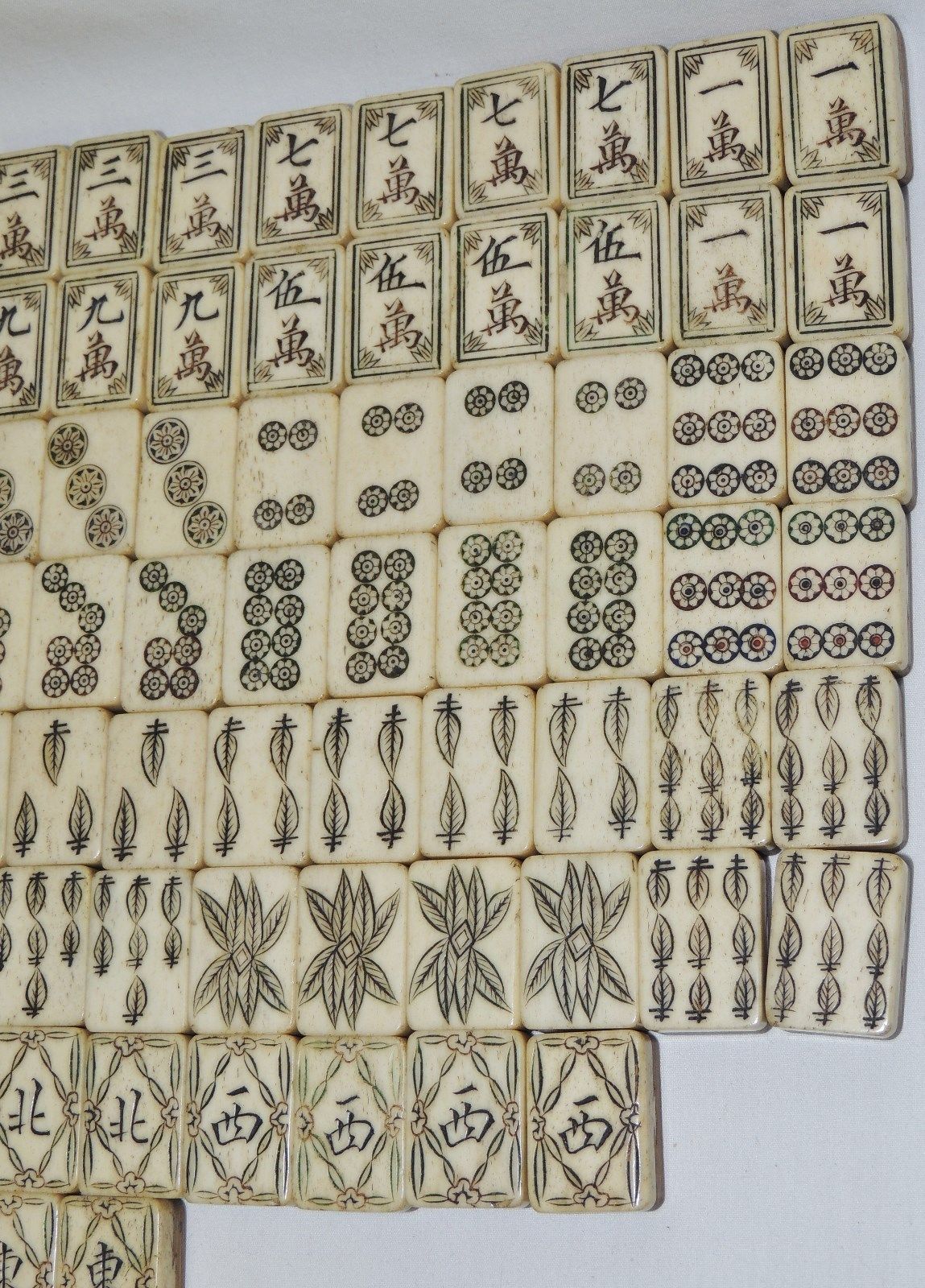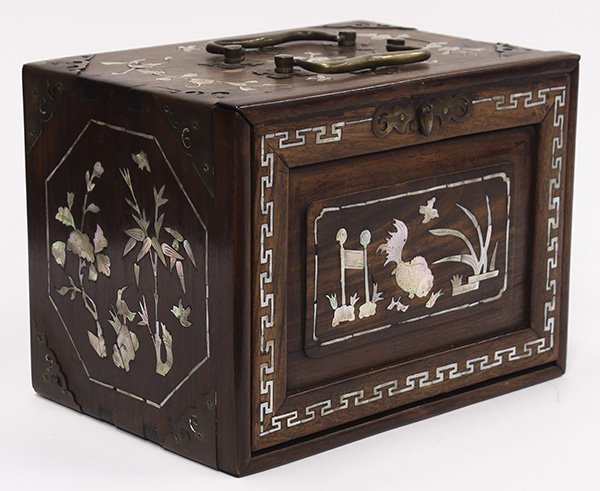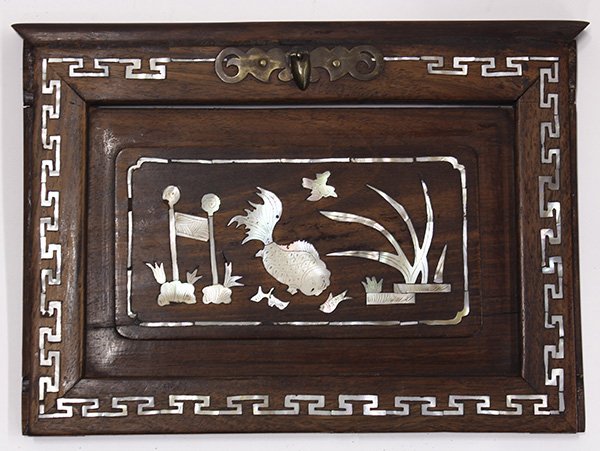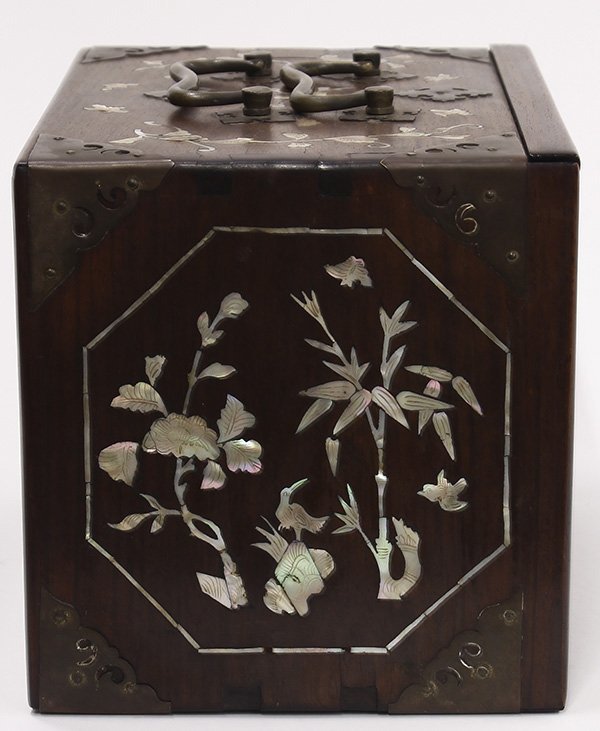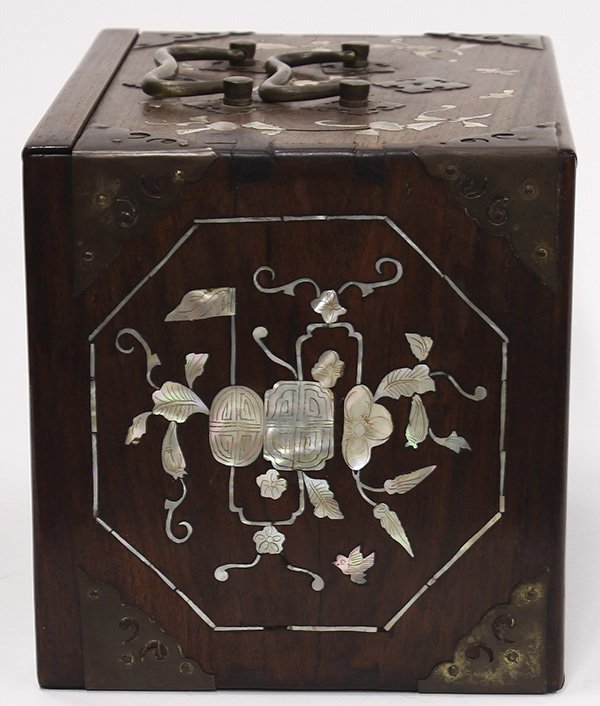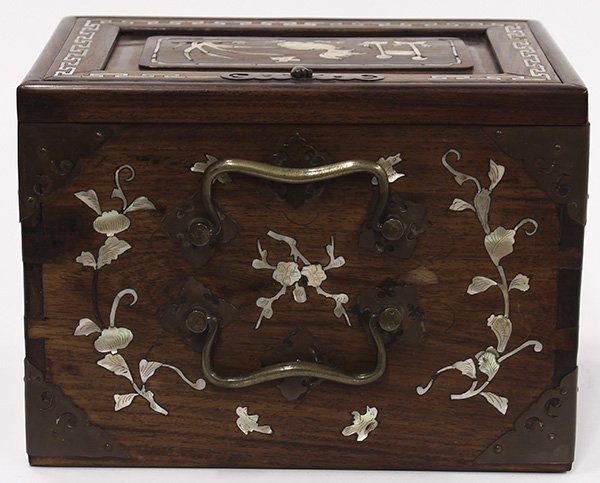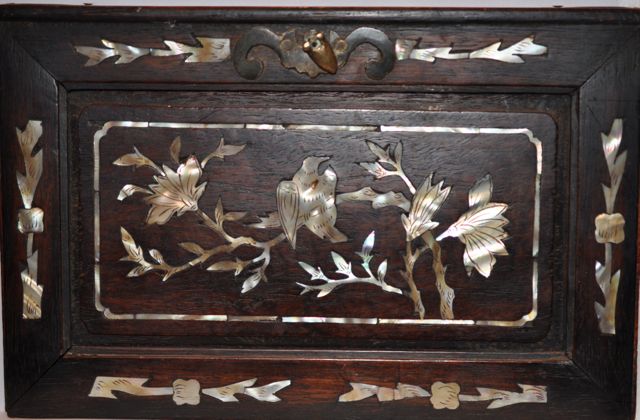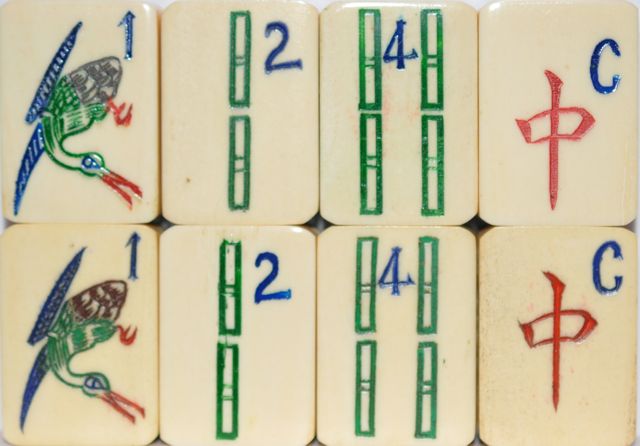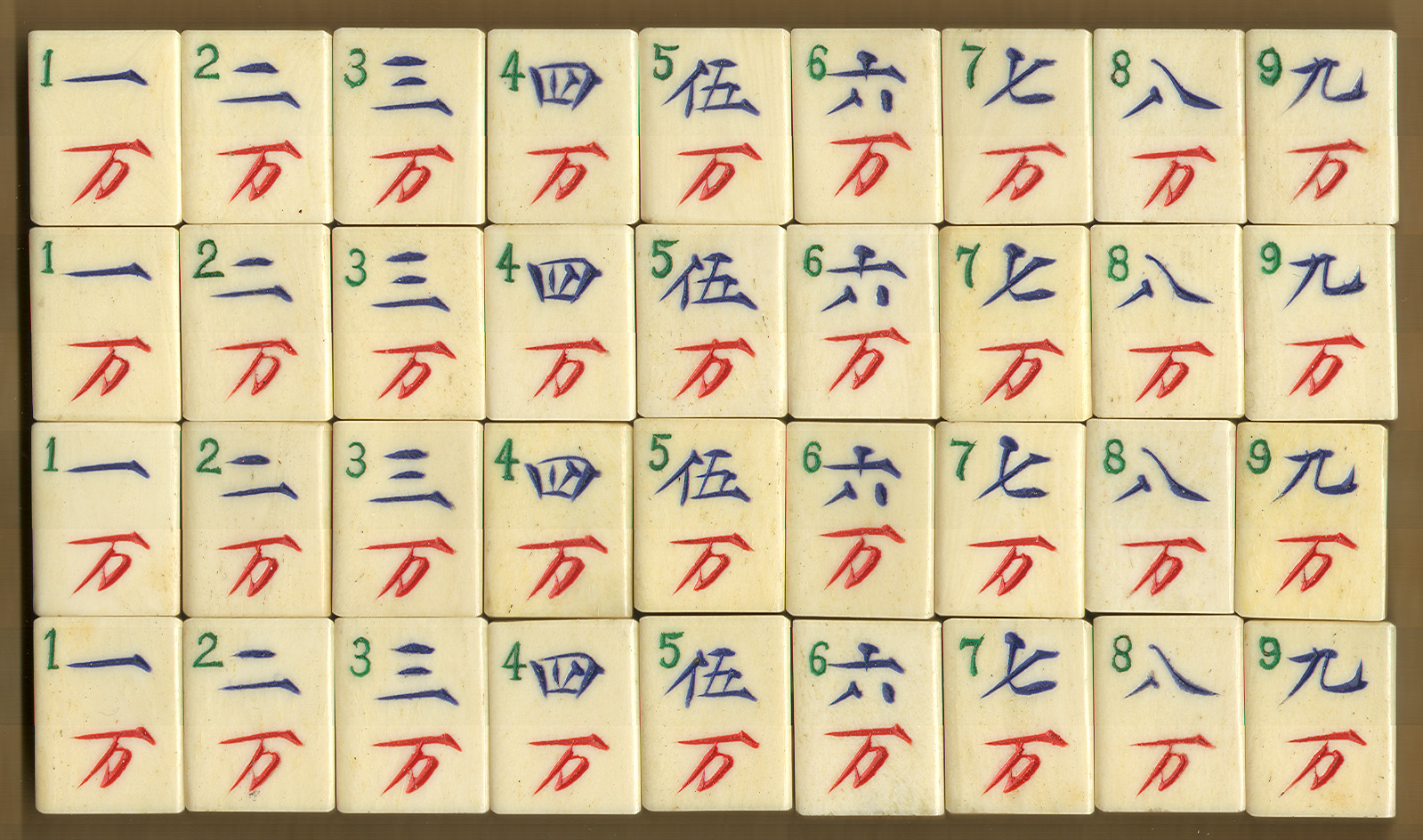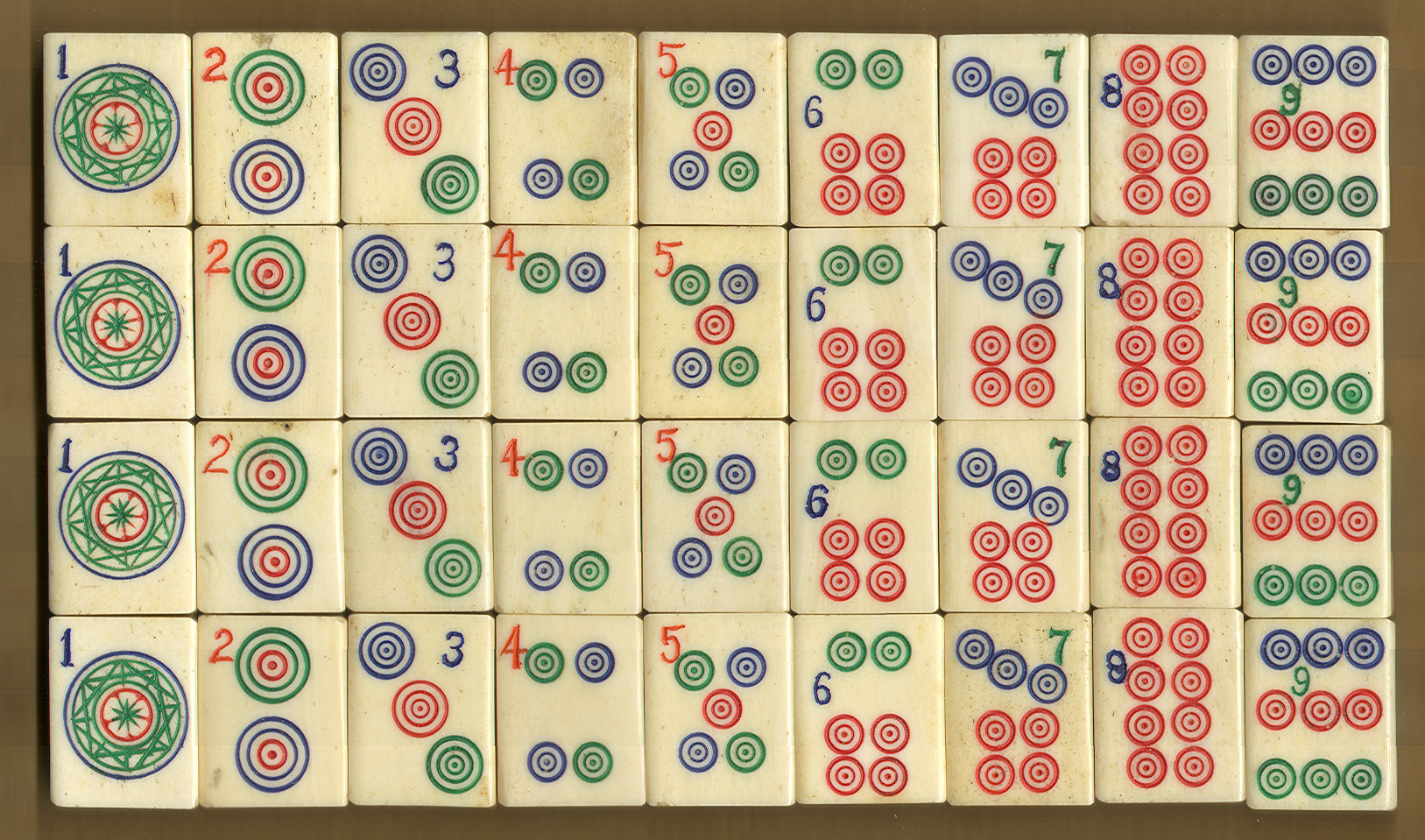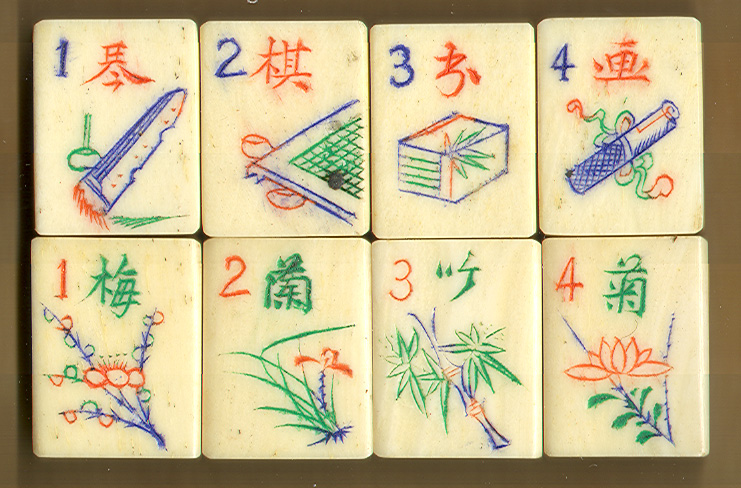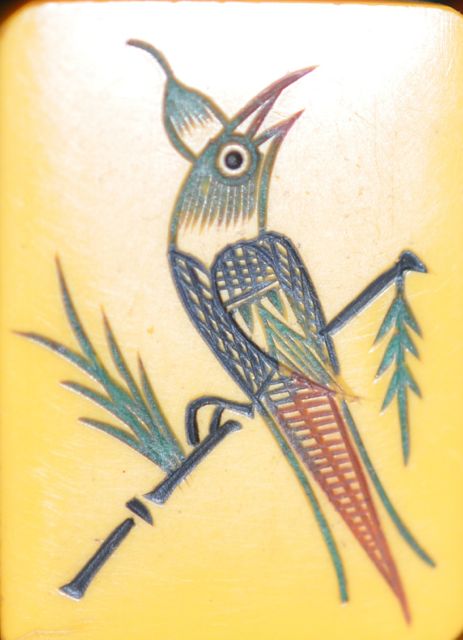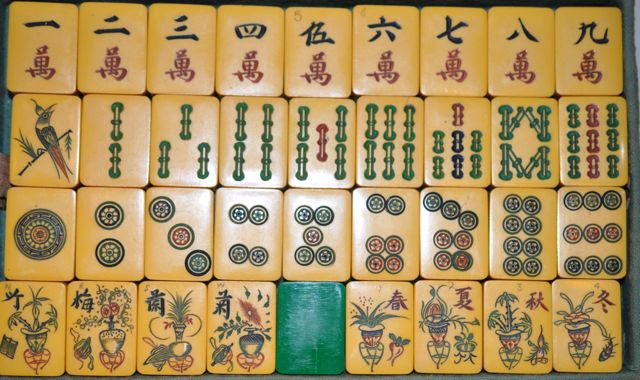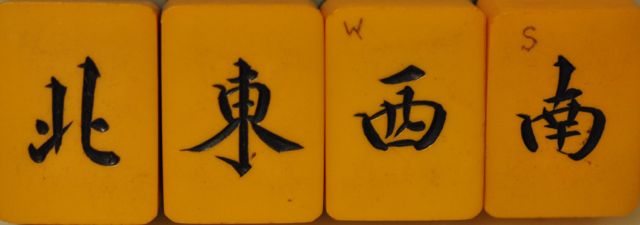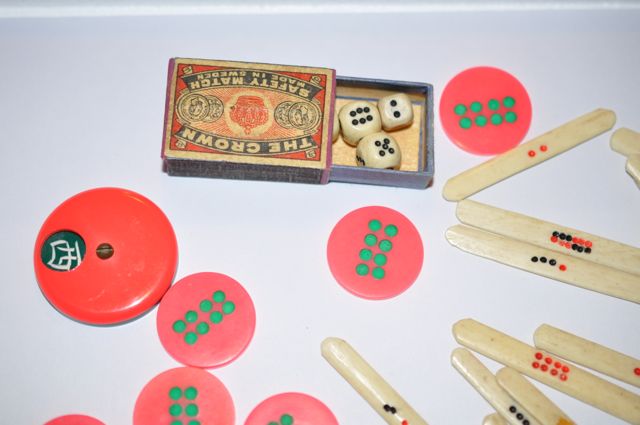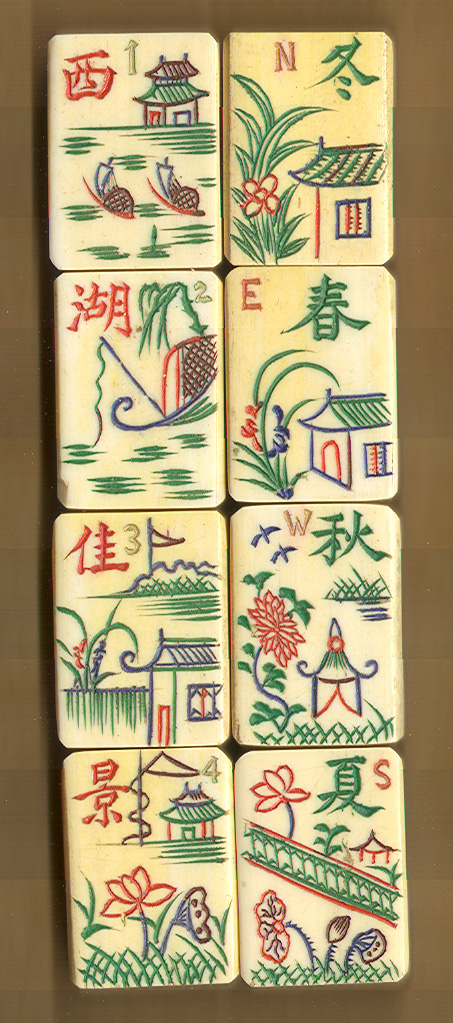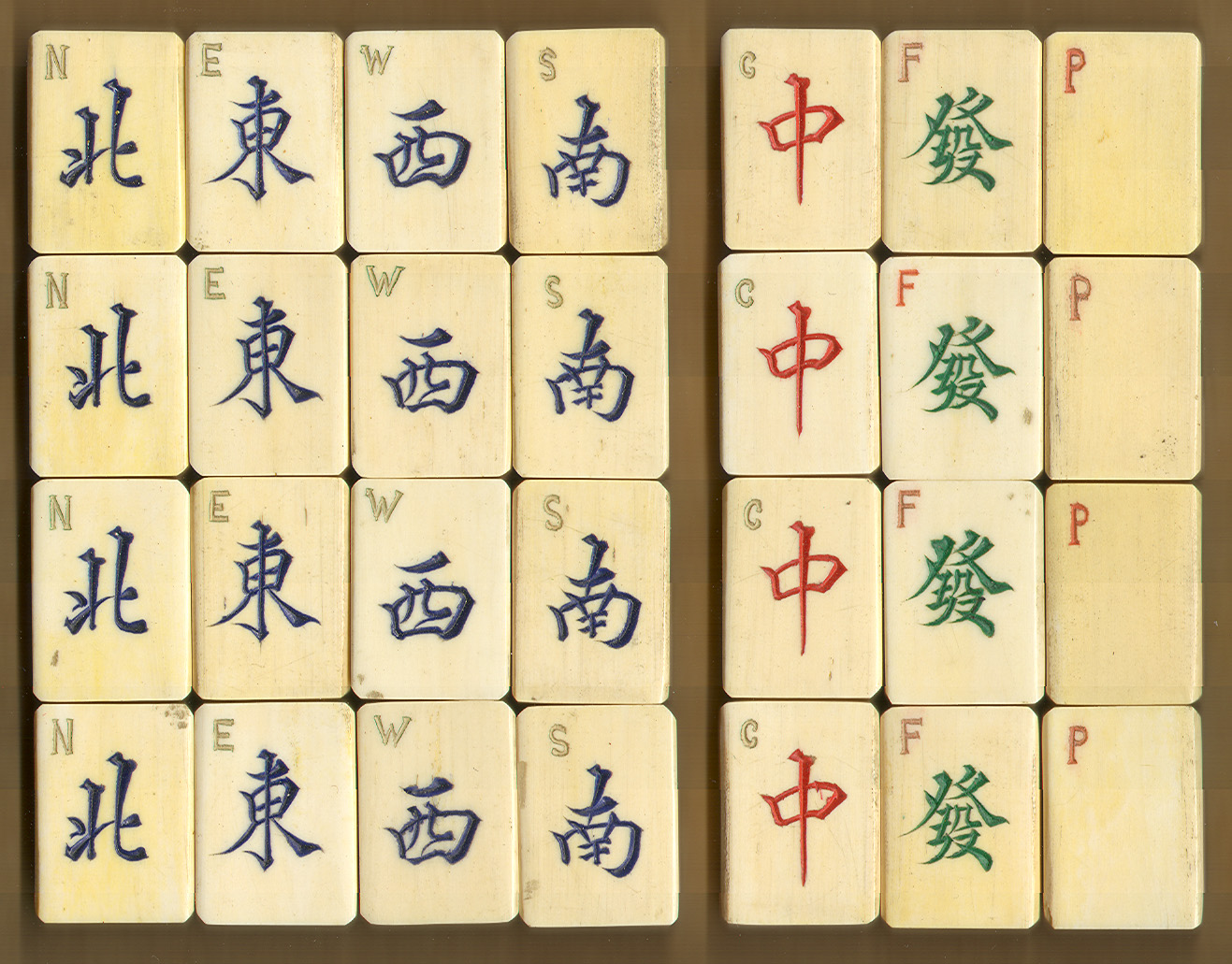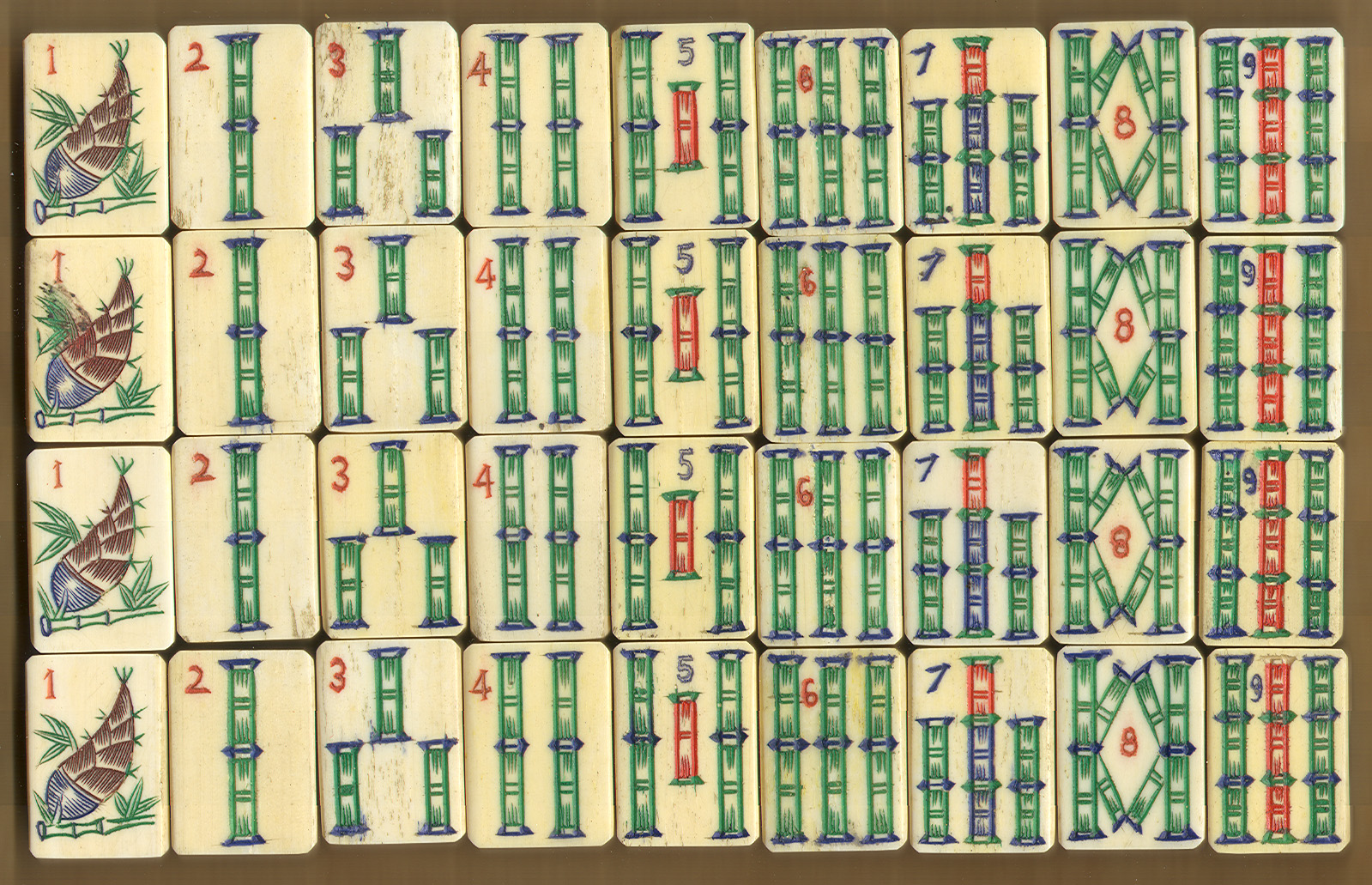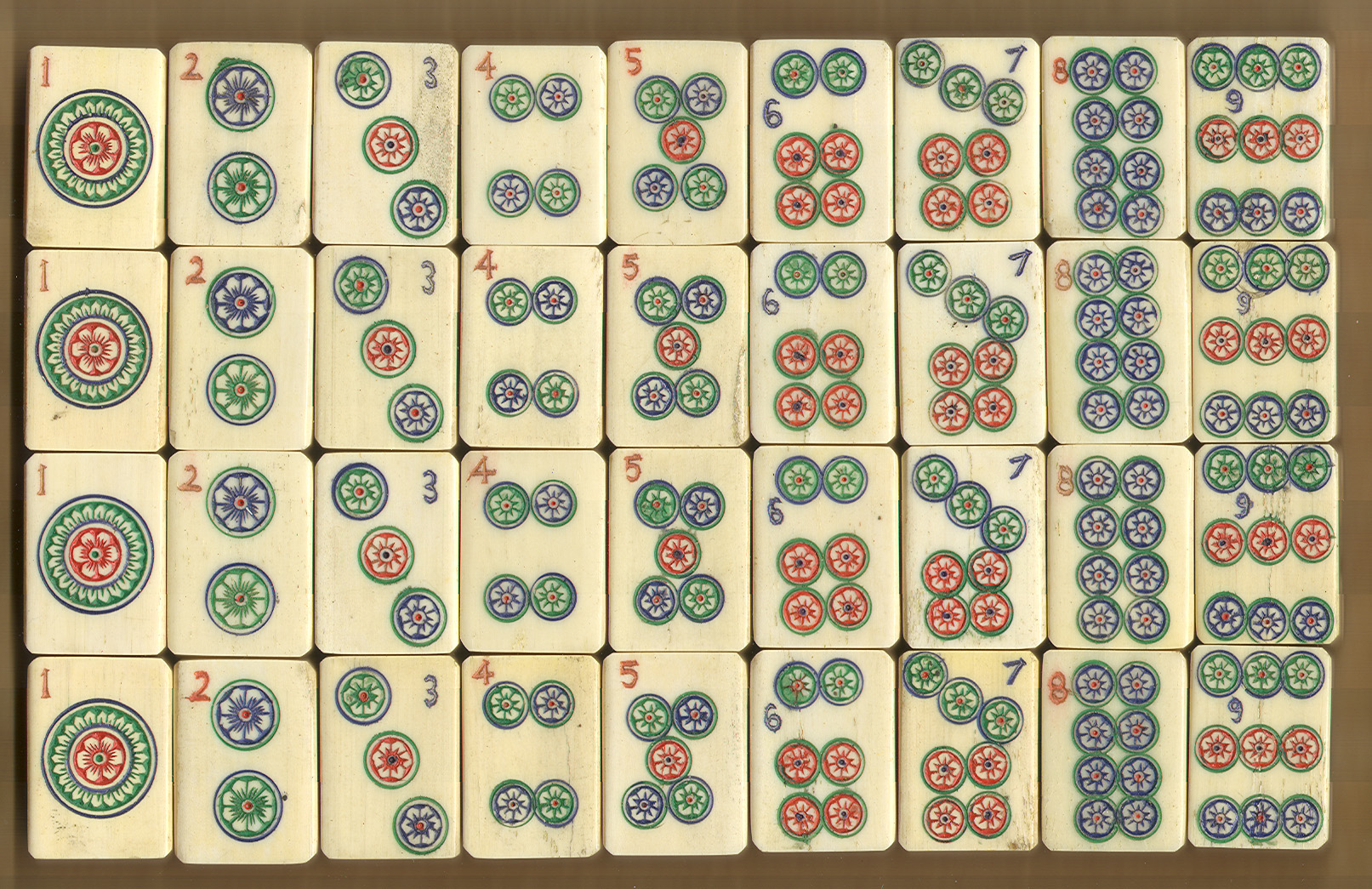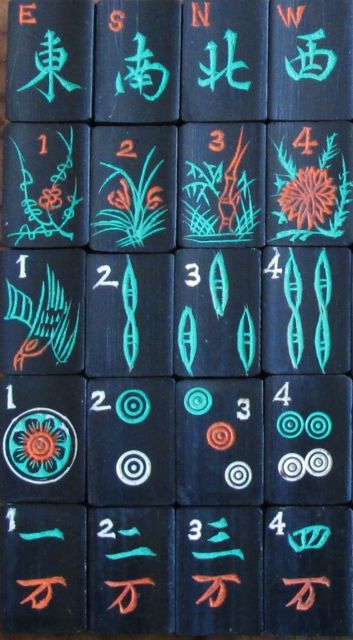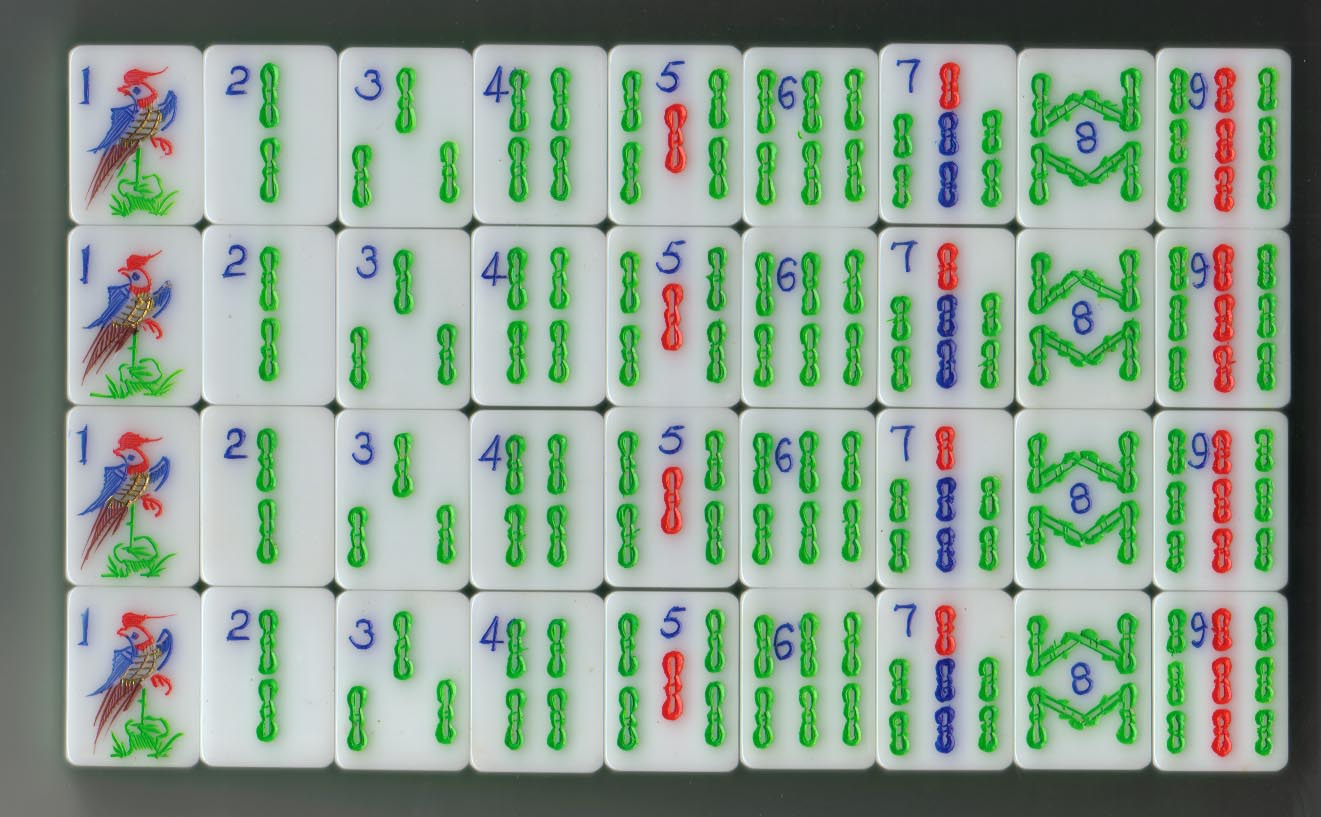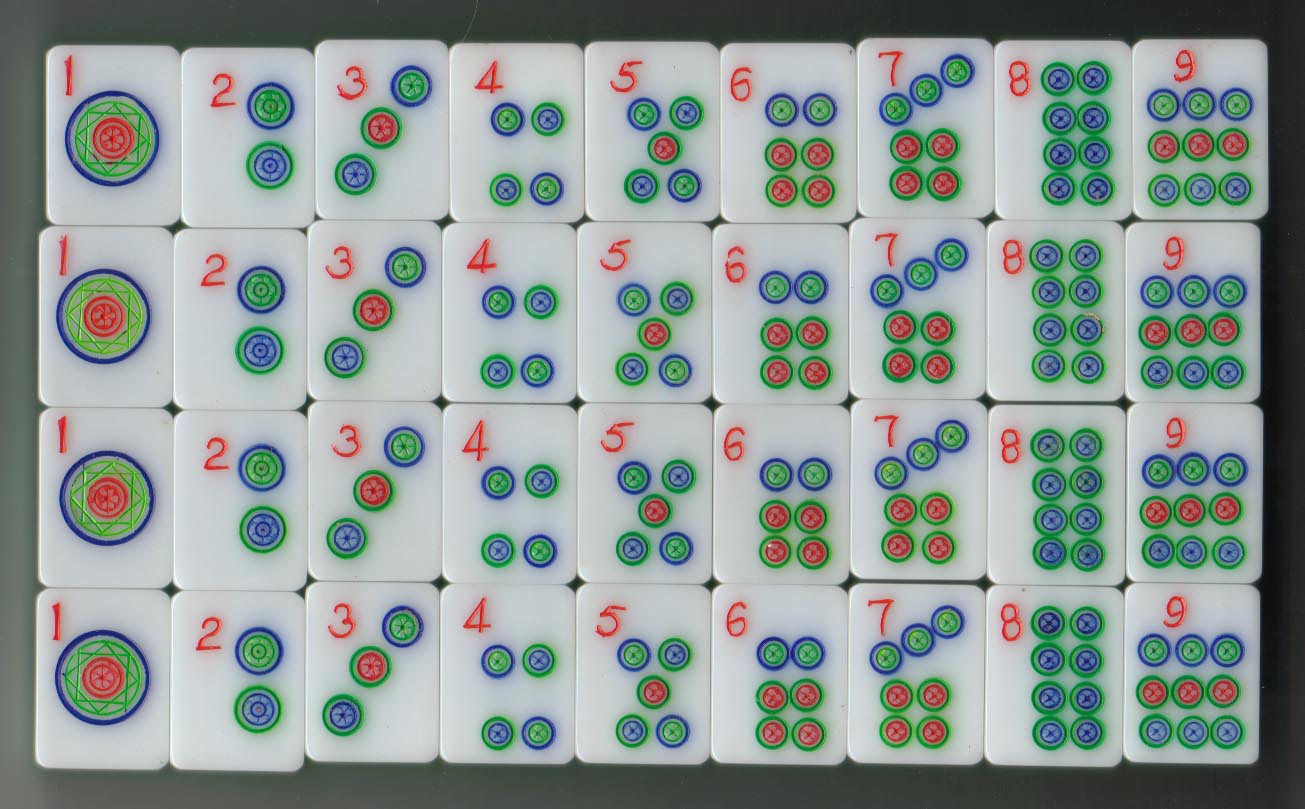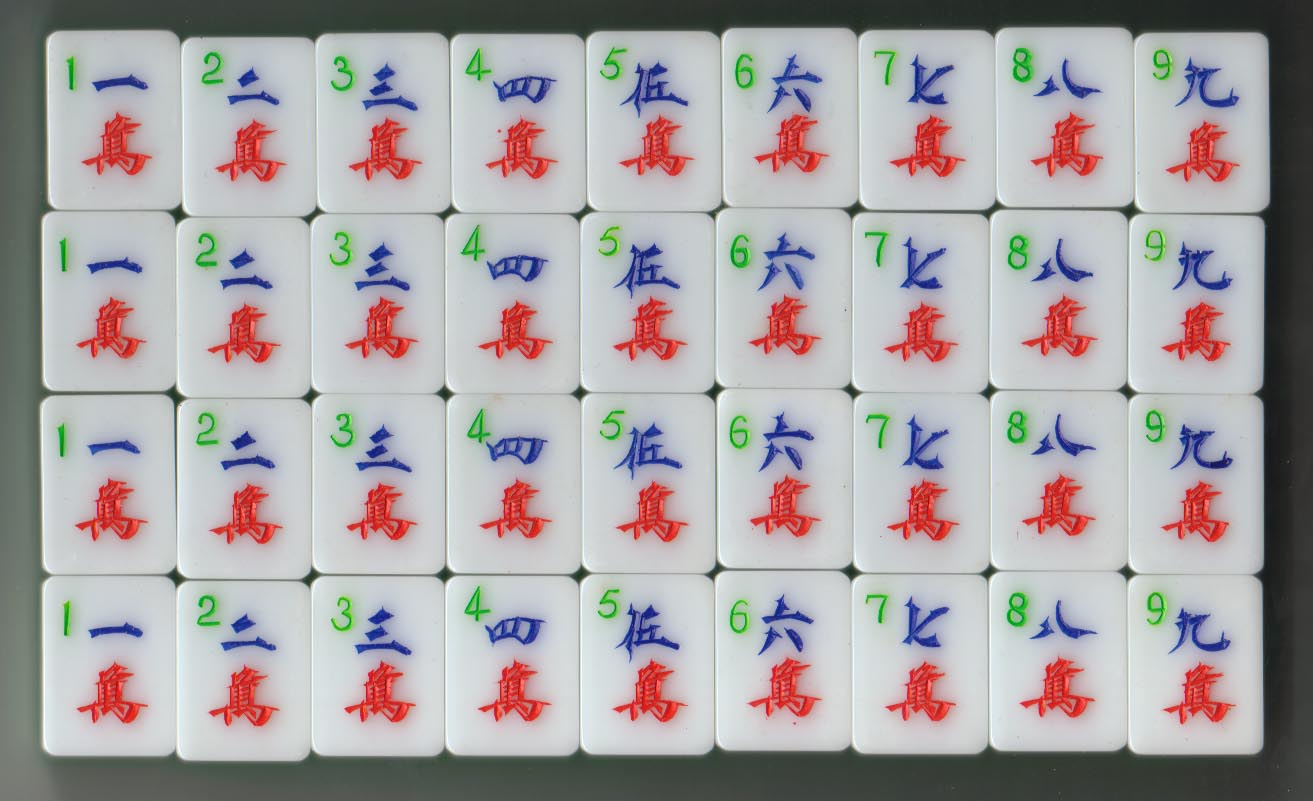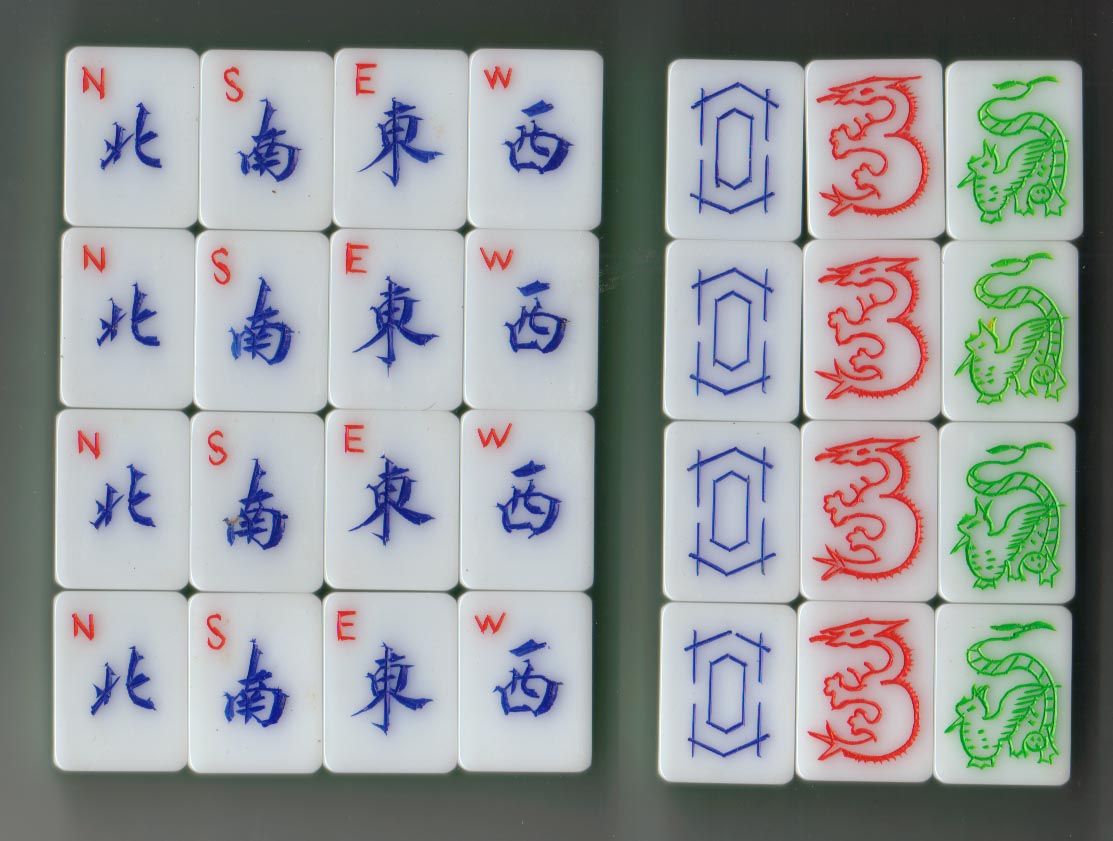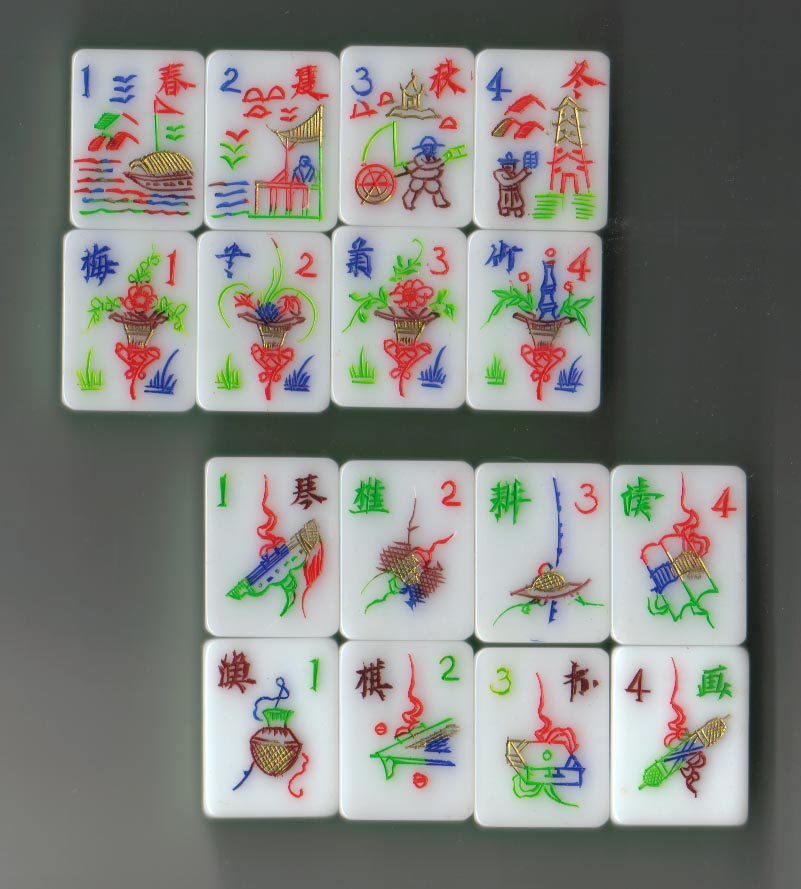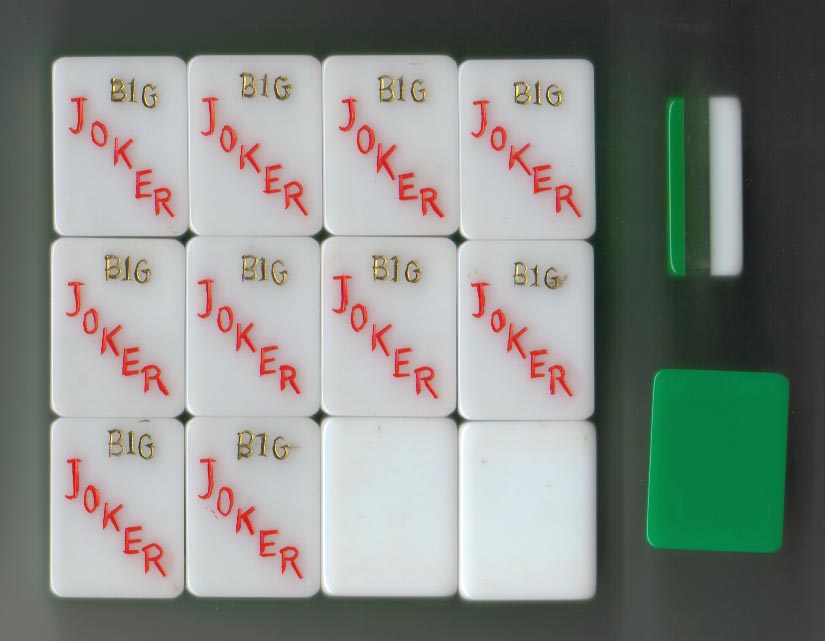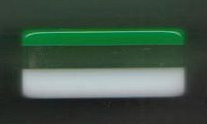This lovely set with thick bone is elaborately carved. It was not intended for export as can be seen by the lack of Arabic numbers on these tiles. The Bams are in the elaborate, "barbed" form, with lovely shadings on the stalks. The crane, signifying longevity, is swooping on the One Bam.
Many of us feel these monochromatic sets are Japanese in origin, but Michael Stanwick, one of the best Mahjong historians, does not feel we can make that assumption. He feels this set was most probably made in Shanghai, and exported to Japan.
Michael's website can be seen by clicking here.
The One Dot is the flower within a flower we have seen before, and the other Dots continue in the flower design, with their centers being the five petaled plum blossom, a favorite of the Chinese. It symbolizes the five blessings: health, wealth, virtue, longevity, and dying a natural death.
This is a good online quick spot to find symbolism on tiles:
http://primaltrek.com/impliedmeaning.html
The elaborate form of the Wan is seen here. Craks (and Winds) are the hardest to "read" if the player is unfamiliar with Chinese writing, but a little bit of study to learn the numbers can really open up your play opportunities.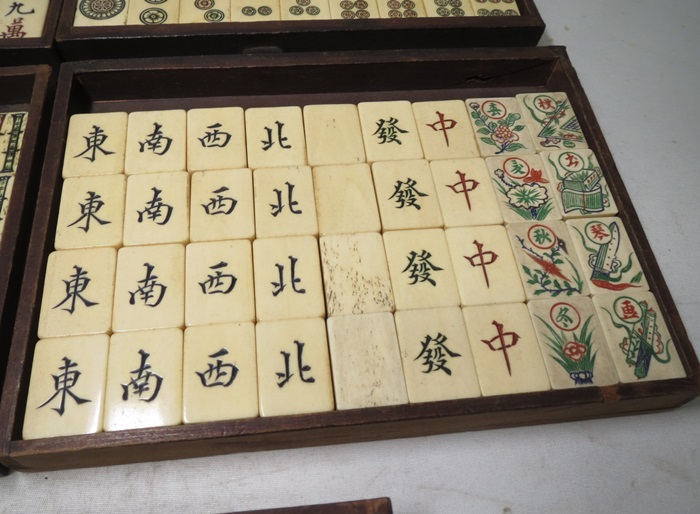
Here the Winds are laid out as they should be in play: East, South, West and North. You will note the Flowers are a slightly different color than the other tiles. This often happens in sets played with according to some Asian ways of play, because Flowers are often not used or are used as bonus tiles, thus they "age" differently.


